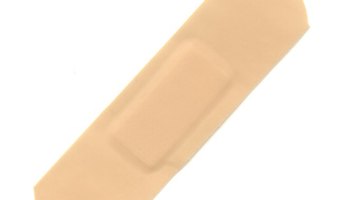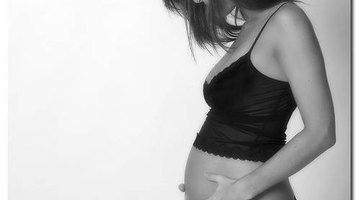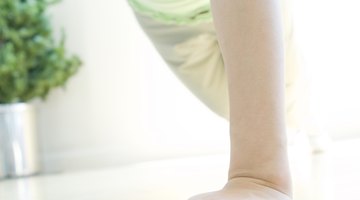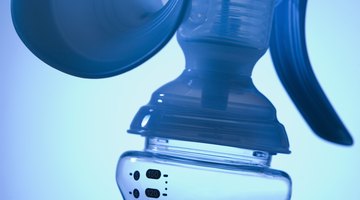When Can I Take a Bath After Giving Birth
Taking the First Bath After Having a Baby
One of the first things many new moms look forward to after giving birth is having a nice bath or shower. After all, giving birth is a messy job. Unless your doctor tells you differently, you may be able to take a bath after giving birth as soon as you want to. However, depending on whether you gave birth vaginally or through a C-section, and if you had any complications with the birth, you may need to restrict yourself to showering rather than a full bath. Additionally, your doctor may caution you about how you wash yourself.
Taking a Bath After a Vaginal Birth
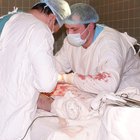
How to Recover From Gallbladder Removal Surgery
Learn More
After giving birth vaginally, your vagina and perineum, the area between your vagina and anus, will likely be sore. Soaking in a warm bath or standing in the shower is an ideal way to ease any soreness.
If you gave birth vaginally and had an episiotomy, a cut to make the vaginal opening larger so the baby can come out, or if you tore, ask your doctor when you can have a bath or shower. She may advise you to wait at least 24 hours to prevent infection. After taking a bath or shower with mild soap and warm water, gently pat your vaginal area dry with a towel.
You may be in pain and discomfort as the stitches heal. To help with the pain and encourage healing, take sitz baths. Designed to fit over toilet seats, sitz baths are small tubs that you fill with warm water and sit on, so the area from your vagina and anus is soothed with the warm water. Sitz baths also provide relief from hemorrhoids, which some women develop during pregnancy. Many brands of sitz baths are available through retail stores and on the internet. Follow the included instructions. For the first week or two after delivery, you may find use the sitz bath for 10 to 15 minutes at a time, up to three times a day.
The stitches will dissolve on their own by about two weeks. Your doctor will examine you to ensure that everything is healing correctly during your first postpartum checkup, which usually takes place about six weeks after birth. However, call your doctor before then if your pain seems to get worse rather than better as the days go by. Also call your doctor if you notice any foul discharge or increased swelling or the wound seems to have broken.
Taking a Bath After a C-Section
After a C-section, you may be in pain for several weeks. Besides being painful, the incision may be tender. You should not take a bath until your incision has healed, and your doctor says it's okay. In most cases, the incision takes about three weeks to heal. To be safe, you may want to wait until after your six-week postpartum checkup before taking a full bath. Until then, you can take showers.
Take care when entering and exiting the shower, especially if you have to step in or out of a bathtub. You may want to hold on to something as you do so to prevent exerting your stomach area. Shower with mild soap and warm water. Don't scrub or rub the incision. Letting the soap and water run over the incision is usually enough to clean it. After showering, dry the incision by patting it gently with a towel.
If you have a bandage dressing over your incision and have been told to keep your incision covered, you should change the dressing once a day or sooner if it gets wet or dirty. After taking off the bandage dressing, wash the area with mild soap and warm water. Once the area is dry, put a new bandage dressing over it.
If your incision was covered with adhesive surgical tape strips, you may also shower with mild soap and water. Don't try to wash off the surgical tape. Simply let the soap and water run over the strips. After showering, dry the area by gently patting with a towel.
Don't put any creams or lotions on your incision. If you notice that you have increased pain and swelling around your incision area, notify your doctor as it may mean that your incision has become infected. Other signs of infection and improper healing include fever, swelling, redness, pus discharge and separation of the skin.
Postpartum Bleeding

Swimming Is Ideal Exercise After a C-Section, but Don't Start Too Soon
Learn More
After giving birth, whether vaginally or through a C-section, you'll have blood coming out of your vagina as if you are having a menstrual period. This blood, called “lochia,” is the result of your uterus shrinking back to its pre-pregnancy size. Initially, especially right after birth, you'll be bleeding heavily, and the blood with be bright red. You may also experience some cramping. As the days go by, the bleeding will decrease and lighten in color, from red to pink and then yellow or white. The bleeding may continue for up to about six weeks. You can wear menstrual pads to soak up the blood.
Postpartum Recovery
Whether you delivered vaginally or had a C-section, the most important thing for you to do after giving birth is to rest and enjoy your baby. Remember that to take care of your baby, you need to first take care of yourself. Ask for and accept help when it comes to meals, house cleaning and errands. Try to nap when the baby naps. Rest is especially important if you had a C-section. After a C-section, avoid lifting anything heavier than your baby and any strenuous activity, such as heavy exercise, until your doctor examines you and gives you permission. Take the pain medication prescribed by your doctor as directed to help ease any discomfort and pain.
Try having someone else take care of the baby sometimes, so you can enjoy a leisurely and relaxing bath or shower without worrying about your baby waking up. Even if you don't have the time to take a bath or shower, you can clean your vaginal and anus area with a perineal irrigation bottle. A peri bottle is a small bottle that you fill with warm water and squirt over your vagina and/or anus. Not only does it help keep you clean, you can also use it as you're urinating to relieve any stinging and to provide relief from any hemorrhoids.
Having a baby is a major life event. Even if you had a vaginal birth with no tearing, you'll likely feel some soreness and pain for some time, not only from your vaginal area but also your breasts, which now have the important job of feeding your baby. On top of that, you'll likely be exhausted from labor and taking care of your baby. Rest as much as you can, get as much help as you can, eat healthy meals, drink lots of water and follow any after-birth instructions from your doctor. Most importantly, call your doctor if you feel as if you're not healing and recovering, either physically or emotionally, as you should.


